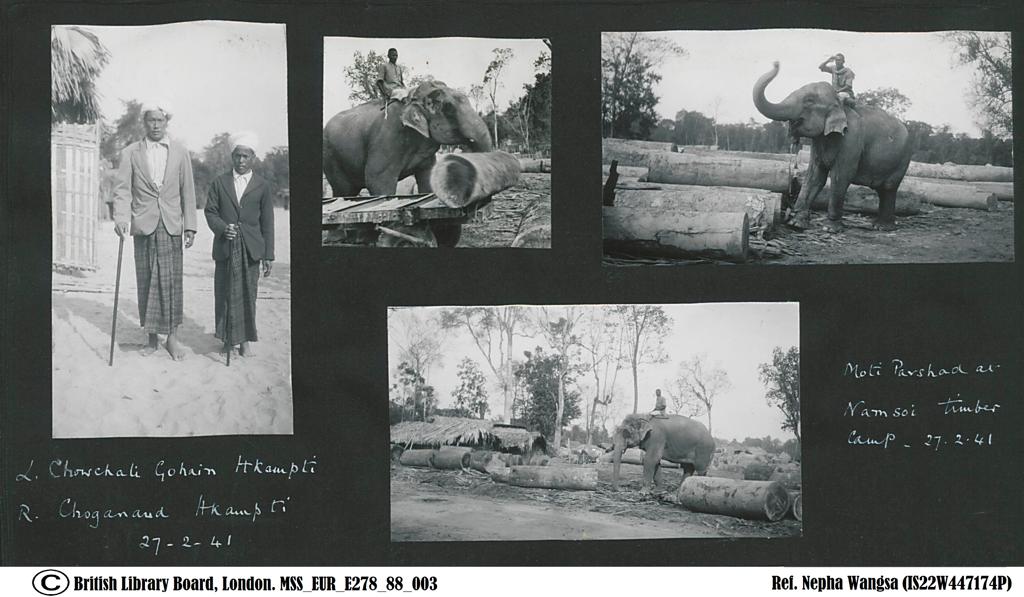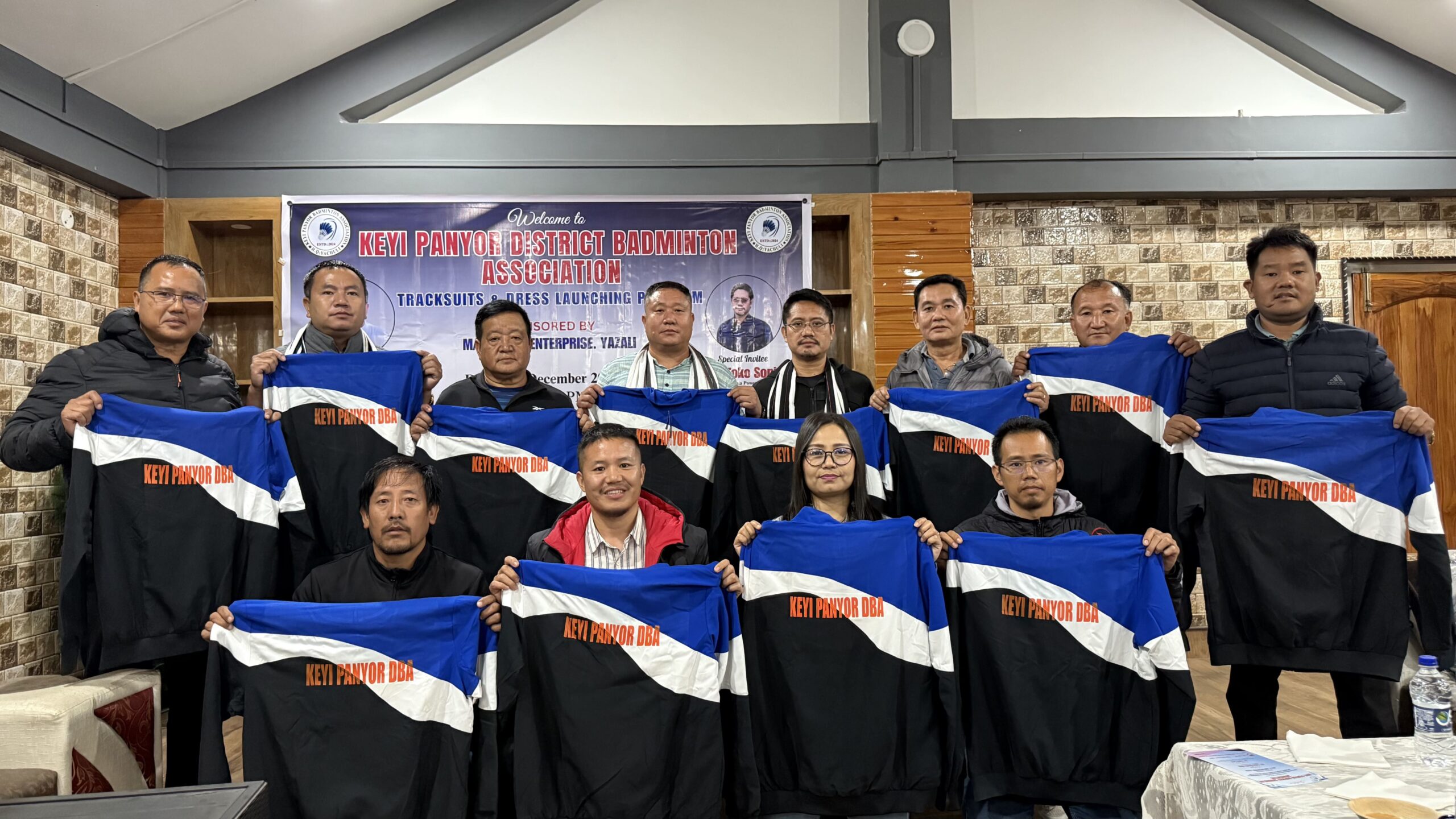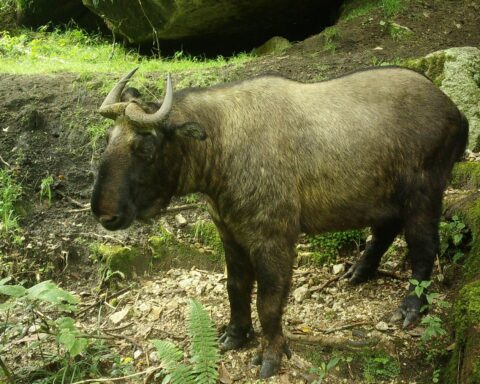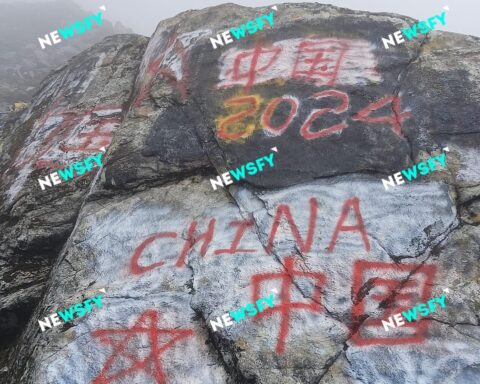India celebrates 75 years of independence and the campaign of Azadi Ka Amrit Mahotsav with one of themes as the ‘Unsung Heroes of India’ is being highlighted at large.
The term ‘Sadiya Khowa Gohain’ synchronizes much to the call as the uprising of 1839 popularly known as the ‘The Khamti Rebellion’ in the eastern state is recorded as one among the early resistance against the colonial rule in India.
As a part of the research team on the Unsung Heroes of Arunachal Pradesh; I have come across this particular question of adopting “Gohain” a Tai Ahom (Assamese) title by the Tai Khamti people.
It has also popped up, especially on the social media sites questioning their identity. I feel such is an opportunity for us to revisit our history and understand the rich legacy of our forefathers.
‘Sadiya Khowa Gohain, or the Governor of Sadiya’ as described by John F. Michel (1883) was an office created by the Tai Ahom rulers after they acquired the territories from the Chutia Kingdom during their rule over Assam.
This dignified office of governing upper Assam was taken over by the Tai Khamtis in 1794 AD, about 228 years ago. The title had been conferred to the Chief of Tai Khamtis after they ousted the then Sadiya Khowa Gohain during the reign of the Tai Ahom ruler Goureenath Sing.
The Tai Khamtis, an indigenous tribe of Arunachal Pradesh had settled down in the present day Namsai District in about 1751 A.D during the reign of Rajeswar Sing, Raja of Assam as recorded in Sketch of Assam (1847). John M’Cosh in ‘Topography of Assam’ (1837) stated that “The Kangtis (Tai Khamtis) are the most civilised of all these mountain tribes; they inhabit that triangular tract of country bounded by the Lohit on the one side, by the Dihong on the other, and by the mountainous country belonging to the Mishmis on the third”
This ‘warrior tribe’ after their dismemberment of the Shan Empire of Pong, they migrated from Putao or Khamti Long to settle down on banks of Tengapani.
Thereafter they expanded their rule in the country. John M’Cosh, ‘Topography of Assam’ (1837) further recorded that “Sadiya is the capital of the Kangti (Tai Khamti) Country”.
This Title “Sadiya Khowa Gohain” which bestowed great respect, dignity and power over the Territory was adopted by the Tai Khamtis andestablished a designate class of rulers over the population of that time.Since, then the Title “Gohain” became a household name of the Tai Khamti community.
Records suggest that the title ‘Gohain’ was popularly used by the Tai Khamtis for more than a century. Much before the Britishers took over the reign in Upper Assam, the Burmese invaders in 1818 displaced the Tai Khamti Sadiya Khowa Gohain and appointed their own, however, they acknowledged their prominences and trust of the Tai Khamtis, and the tract was under their control.
In 1824-25, when the British government conquered the province and extended their rule in upper Assam, David Scott, the Governor General’s Agent acknowledged the dominion of the Tai Khamtis at Sadiya. Captain Neufville bestowed on the Tai Khamti Chief Chausalan the title of Sadiya Khowa Gohain. He was permitted to collect poll-tax from the Assamese people.
The agreement made between David Scott and Chausalan, the Sadiya Khowa Gohain on 15thMay 1826 is eminent evidence of the rule of Tai Khamtis as ‘Gohains’ in Sadiya.
On 10th March 1838, Adam White the Political Agent in his report to Captain F. Jenkins (Agent to the Governor General) mentioned that the Tai Khamti Chiefs of Sadiya were ‘The Runoa Gohain, Towa Gohain, Chowrung Pha (Ex. Sadiya Khowa Gohain) and Kaptan Gohain’.
These Tai Khamti chiefs led the war against the British on 28th January 1839, killing Colonel A. White, Commanding of Assam Light Infantry and burning down the cantonment at Sadiya.
A war fought with one of the immediate causes being the removal of the office of the Sadiya Khowa Gohain. This war is one of the early resistances against the British government in India before the first war of independence in 1857.
In 1851, even a French Missionary, Monsieur Krick who was later killed in the Mishmi Hills had mentioned in his reports about his close affinity of a Tai Khamti Chief Chokeng Gohain.
The title ‘Gohain’ has been significant and widely used by the Tai Khamtis even after India’s independence and a democratic government was set up. It was until their Chief ChowKhamoon Gohain, also the first MP of Arunachal Pradesh suggested his people to get back to the original titles.
Dispersion of Tai Khamti population
The Tai Khamti people became victims of the successive punitive expeditions after the Tai Khamti-Anglo war of 1839, though they bravely fought against the Britishers over the years.
The British government came up with a design to disintegrate the Tai Khamti population at Sadiya and dispatched them to different locations. In 1843; Captain Vetch dispatched one group under the Kaptan Gohain, the cousin of Ex. Sadiya Khowa Gohain at Chanpura, another group near Tengapani, a group under Chowtung Gohain to settle at Demaji Lakhimpur and a group under Bhodia, the son of Ex. Sadiya Khowa Gohain was sent to Narayanpur.
While majority of the Tai Khamti continue to reside on the banks of Tengapani where they first settled after their migration from Burma and ahandful of population are found in Assam.
The Question on the identity as a non-indigene?
Arunachal Deputy Chief Minister Chowna Mein once stated “I am extremely proud to be a Tai Khamti. Your identity is your perception of who you are”.
Indeed, He has a legacy to carry forward from his forefathers. Being a son of Late Chow Pook Gohain, one of the founding fathers of Arunachal Pradesh who was elected as member of the first Agency council in 1969a member of the Agency Council till 1972 when Arunachal Pradesh was renamed from NEFA and made a Union Territory.
His father was born and brought up in Chongkham under Lohit Frontier Division during NEFA days and which became Lohit District. In the year 1948, his father Chowpook Gohain Mein also was a great entrepreneur, established a saw mill at Sunpura, to become the first industrialist in Arunachal Pradesh.
There is no doubt to his legacy; his maternal uncle, Chow Khamoon Gohain was nominated as the first Member of Parliament by the President of India in April 1952 representing the whole of NEFA and again re-nominated in 1957 for the second term.
His maternal Uncle Chow Chandret Gohain was also the Member of Parliament in the 5thLok Sabha. His elder brother Chow Tewa Mein was elected as a member of Pradesh Council in 1972. When the Pradesh Council was converted to the Provisional Legislative Assembly on August 1975,he also became a Member of Provisional Legislative Assembly in 1975.
In the year 1978, Chow Tewa Mein was elected from 23rdNamsai-Chowkham Assembly Constituency and became a member of the first 30 elected members of the Arunachal Pradesh Legislative Assembly and served as a minister later.
Recovery of the Portrait of Tai Khamti men at British Library, London
The research team on Unsung Heroes of Arunachal Pradesh to London, UK made a recovery of the portrait of Chowchali Gohain Hkamti and Choganand HKamti with Moti Parshad (elephant and its rider) captured by Reid Robert Niel at Namsai Timber camp on 27thFebruary 1941.
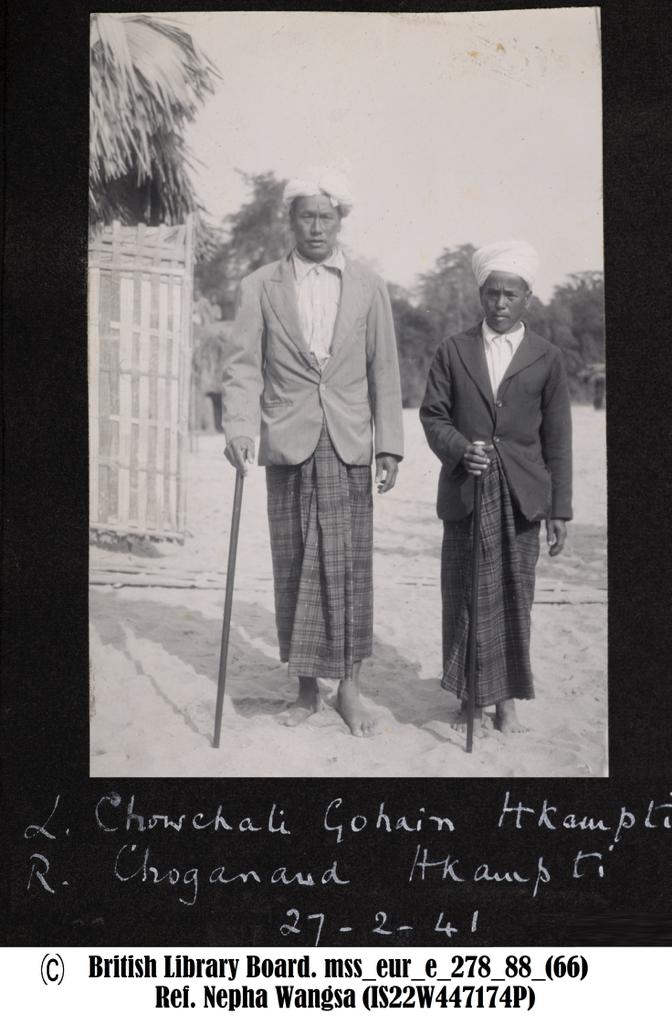
The portrait of the two Khamti Men are the grandfathers (paternal and maternal respectively) of Chowna Mein. It is a piece of the glorious legacy of his Lineage as a proud son of the soil, who has dedicated his life to public service of Arunachal Pradesh.
The photograph of the Chowchali Gohain and Chogan and but to be pronounce as Chow Kanan(who was great chief of the Tai Khamtis and father of Chow Khamoon Gohain, first MP of A.P) is just a living example of their prominence as social leaders of the Tai Khamtis and the importance they held during the British regime, who have been acknowledged upon by preserving their portrait at British Library in London.
Over the years there has been malicious attempt to degrade the name of Tai Khamti community for using the title ‘Gohain’ in the past and misrepresent the enduring legacy of Deputy Chief Minister Chowna Mein and his family from the narrow prism of politics.
Such malicious attempts does not augur well for a multi ethnic state, where every ethnic groups and tribes have their own distinct history, migration trails, religious belief, practices and food habits etc. which needs to be respected and uphold upon.
The Tai Khamtis were once the rulers of Upper Assam as the Governor of Sadiya as we look back into the time, it is a proud piece of history for the people of the State which cannot be subdued or distorted even if attempts are being made from time to time.
Hence, it is for us to determine with all honesty without a prejudice mindset whether to question or to celebrate the rich legacy of our fellow Arunachalee tribe who officially ruled in Upper Assam as the ‘Sadiya Khowa Gohain’ once upon a time.
(Nepha Wangsa is a member of the research team on Unsung Heroes of Arunachal Pradesh. The photograph given for publication is done with due permission granted to the writer by the British Library Board, London .He can be contacted at nephawangsa@gmail.com.)
Also read: Efforts on to include Arunachal history in NCERT books: Mein

